We are what we eat. When we are under stress, we tend to fill
ourselves with convenience food, which can be synonymous with
“junk”. Eating well must be part of any serious programme to
reduce stress levels. Make a start by minimizing bad habits.
Reducing bad habits
Monitoring what you consume and when may reveal bad habits that have
crept into your diet. The one glass of wine with dinner easily becomes most of
a bottle, while the pizza once a week becomes a daily meal. Try to adopt a well
thought-out and balanced diet, replacing convenience foods with healther
alternatives.
Certain foods have been linked with poor overall health. Avoid foods
high in saturated fats, such as meat, cheese, butter, and eggs. Use olive oil
or sunflower oil for cooking, and steam and grill food rather than frying it.
Eat plenty of oily fish, such as mackerel, and try a soya-based meal in place
of meat. Reduce your daily intake of caffeine by replacing coffee and tea with
water or juice. Drink at least eight glasses of water every day.
Balancing your diet
Instead of reheating convenience foods when you come home from
work, why not prepare yourself a nutritious plate of pasta? It is just as easy
and quick to cook as fast foods and is a much healthier alternative.
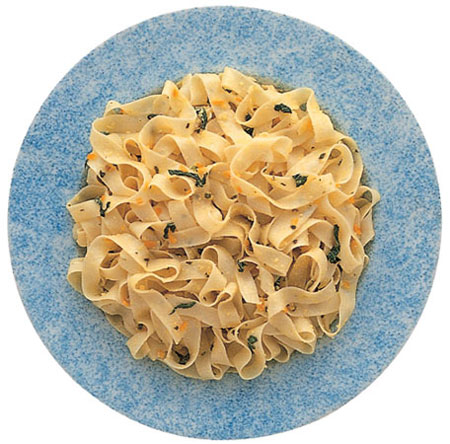
Do's and don'ts
Do eat small meals at regular intervals rather than one enormous dinner. Do determine your optimum weight, and then aim to stick to it. Do aim for moderation in all things. Don’t snack between meals, especially on sugary foods, which drain the body of valuable nutrients. Don’t keep sweets in the house. Don’t eat a lot of salt, sugar, or white bread.
Table Essential components of a healthy diet| Components | |
|---|
| Components | | |
Vitamins and Minerals
Vitamins help the body function properly. There is an official
recommended daily intake for every vitamin. Minerals, as
important to good health as vitamins, comprise some 20 chemical
elements. | Vitamins come from many sources. Vitamin C from citrus fruits,
tomatoes, melons, strawberries; Vitamin D from green vegetables, oily fish,
milk, eggs; Vitamin B1 from meat, yeast, kidneys. Leafy vegetables and fish are
good sources of minerals.
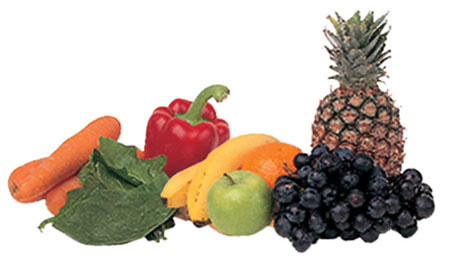
| |
Carbohydrates This large group of foodstuffs includes sugars and starches.
Nutritionists generally recommend that carbohydrates should make up
approximately 55 per cent of a typical healthy diet. | Carbohydrates
are found in wholemeal bread, sweets, biscuits, pasta, apples,
sweetcorn, cereal, baked and red kidney beans, lentils, green peppers,
dried apricots, bananas, baked or boiled potatoes, unsalted nuts, dried
fruit, brown rice.
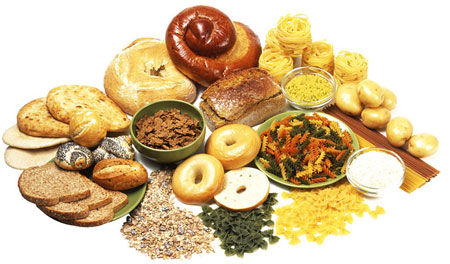
| |
Proteins from Plants
The body needs proteins in the form of amino acids for cell growth and
repair, and to make enzymes for antibodies and hormones. All fruits and
vegetables contain a certain amount of these proteins. | Good sources of plant proteins are peas, beans, grains, lentils,
seeds, and potatoes. Some plant proteins do not contain all or enough essential
amino acids, so vegetarians should try to eat a mixture of nuts or cereals and
peas or beans.
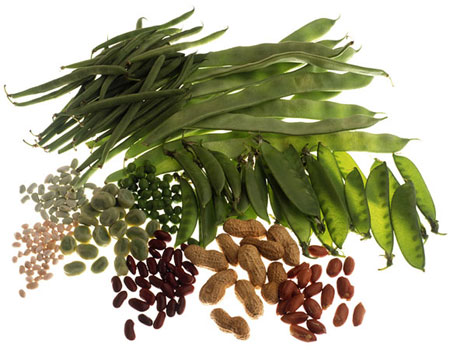
| |
Proteins from Animals Proteins of animal origin provide complete protein. In other
words, they contain the whole range of essential amino acids that the human
body needs, and in the appropriate proportions. |
Red meats are a source of animal proteins that are essential for
a healthy functioning body. These proteins are also found in other sources,
including poultry, fish, eggs, and dairy products such as cheese, butter, milk,
and yoghurt.
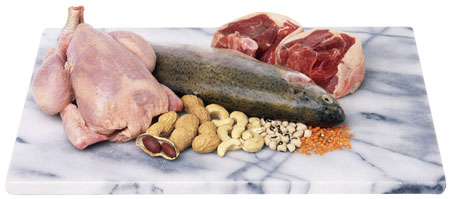
| |
Fats
Fats are the basic energy units in food. The body needs fat to
function efficiently – a healthy diet should comprise 30
per cent fat – but too much can cause serious health problems such as
heart
disease. | Fish, chicken, vegetable oils, and avocadoes are good sources of
light polyunsaturated and monosaturated fats. Butter, meats, eggs, cream, and
whole milk are high in saturated fat, which is harder for the body to process
and less healthy than polyunsaturated or monosaturated fat.
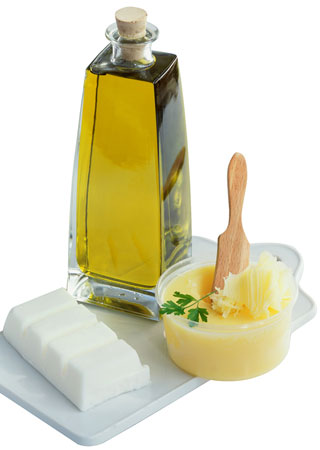
|
TIP
Breakfast like a king, lunch like a prince, and dine like a
pauper.
TIP
Chew a crisp, raw carrot if you feel the urge to eat between
meals.
|